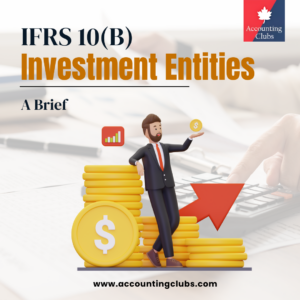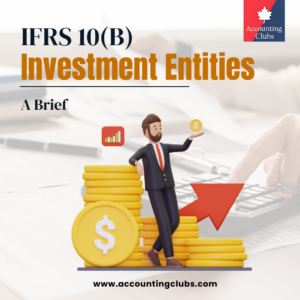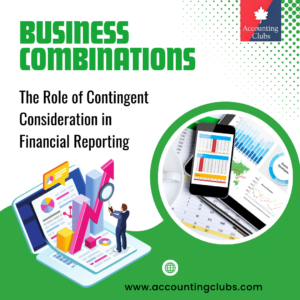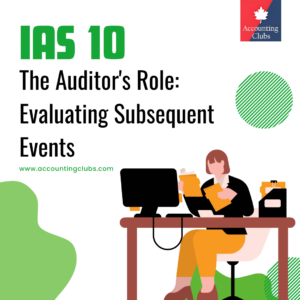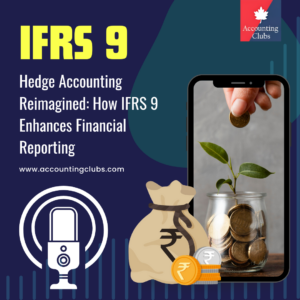Chapter 6: Other costs
Other costs to be included in the cost of inventories
Other costs are included in the cost of inventories only to the extent that they are incurred in bringing the inventories to their present location and condition.
Costs to be excluded from the cost of inventories
IAS 2 gives the following as examples of costs that should be excluded from the cost of inventories and recognised as expenses in the period in which they are incurred:
- abnormal amounts of wasted materials, labour, or other production costs;
- storage costs, unless those costs are necessary in the production process before a further production stage;
- administrative overheads that do not contribute to bringing inventories to their present location and condition; and
- selling costs.
Other costs incurred in bringing inventories to their present location and condition – example Company A, which redevelops and then sells real estate, purchases a disused petrol station and obtains planning permission from the local authority to redevelop the site for residential purposes. Planning permission is granted subject to the condition that Company A will also develop a recreation amenity on an adjacent site owned by the local authority.
Company A should include the costs incurred in developing the adjacent recreation amenity in the cost of its development property inventories. These costs meet the definition of “costs incurred in bringing inventories to their present location and condition” because they were a necessary cost of redeveloping the disused petrol station into a residential site.
Distribution costs included in the cost of inventories Specific attention should be paid to costs of distribution and transportation associated with moving inventories to their present location and condition for sale, which may include the following:
- transportation of goods from the supplier;
- transportation or distribution at an intermediate stage in the production process;
- transportation or distribution of inventories to a temporary storage location (e.g., warehouse), including costs incurred for receiving, marking, processing, picking and repackaging; and
- transportation or distribution of inventories from a warehouse or distribution centre to the initial point of sale.
Costs incurred in transporting an item from a warehouse to its initial point of sale should be capitalised to inventories.
However, costs associated with moving inventories from one point of sale to another (e.g., transport of goods between stores) should not be included in the cost of inventories because the goods were already in a condition and location for sale before the move.
Borrowing costs
The extent to which borrowing costs should be included in the cost of inventories is determined on the basis of the requirements of IAS 23.
IAS 23 expressly states that “inventories that are manufactured, or otherwise produced, over a short period of time, are not qualifying assets“. Only inventories that take a ‘substantial’ period of time to get ready for their intended sale or use can meet the definition of a qualifying asset.
Borrowing costs included in inventories An example of circumstances when it would be appropriate to include borrowing costs in the cost of inventories is when the reporting entity holds maturing inventories (such as whisky).
The maturing period is a necessary part of the period of production and borrowing costs incurred during that period are attributable to bringing the product to its existing condition. Such borrowing costs may therefore appropriately be included in the cost of inventories under IAS 2.
IAS 23 includes an optional scope exemption which allows an entity not to apply that Standard to inventories that are manufactured, or otherwise produced, in large quantities on a repetitive basis.
The exemption is optional; therefore, an entity can choose, as a matter of accounting policy, whether to apply the requirements of IAS 23 to borrowing costs that relate to inventories produced in large quantities on a repetitive basis.
Inventories acquired on deferred settlement terms
When an entity acquires inventories on deferred settlement terms, the transaction may involve a financing element (e.g., when there is a difference between the amount paid and the amount that would have been paid if the inventories had been acquired on normal credit terms). In such circumstances, the financing element is not included in the cost of the inventories, but is recognised as an interest expense over the period of the financing.
Borrowing costs and purchases on deferred terms
IAS 2 states that, in limited circumstances, borrowing costs are to be included in the costs of inventories. IAS 23 – Borrowing Costs – requires that borrowing costs be capitalised on qualifying assets but the scope of that standard exempts inventories that are manufactured in large quantities on a repetitive basis.
In addition, IAS 23 clarifies that inventories manufactured over a short period of time are not qualifying assets.
However, any manufacturer that is producing small quantities over a long time period has to capitalise borrowing costs. IAS 2 also states that on some occasions, an entity might purchase inventories on deferred settlement terms, accompanied by a price increase that effectively makes the arrangement a combined purchase and financing arrangement. Under these circumstances the price difference is recognised as an interest expense over the period of the financing.
Entities might also make prepayments for inventory, particularly raw materials in long-term supply contracts, raising the question of whether there is a financing component that should be accounted for separately. If a purchaser accretes interest on long-term prepayments by recognising interest income, this will result in an increase in the cost of inventories and, ultimately, the cost of sales.
The Interpretations Committee considered this in July 2015, noting that IAS 16 and IAS 38 include similar requirements to IAS 2 when payment for an asset is deferred. Historically there has been no explicit requirement in IFRS to accrete interest income but the Interpretations Committee noted that IFRS 15 includes the requirement that the financing component of a transaction should be recognised separately in circumstances of both prepayment and deferral of payment.
They concluded, therefore, that when a financing component is identified in a long-term supply contract of raw materials, that financing component should be accounted for separately. They acknowledged that judgement is required to identify when individual arrangements contain a financing component.
Inventories invoiced in a foreign currency When inventories are invoiced in a foreign currency, the cost of those inventories should not include exchange differences.
Although this matter is not addressed directly in the body of IAS 2, the introduction to the Standard states that the capitalisation of such exchange differences is not permitted.
Prior to the revision of IAS 21 in 2003, that Standard had permitted the capitalisation of exchange differences in very limited circumstances. That exception to the general rule has been removed from IAS 21.
However, when the purchase of inventories in a foreign currency has been cash flow hedged under IFRS 9, the effective portion of hedging gains and losses previously accumulated in equity is included in the amount initially recognised for the inventories as a ‘basis adjustment’.
For those entities that have not yet adopted IFRS 9, applying a basis adjustment under IAS 39 is optional.
Transfer pricing
Transfer pricing When the manufacturing process involves the transfer of work from one department to another, the transfer may be made at a price different from the cost incurred by the transferring department, either for reasons of convenience in accounting or as part of the system of management control.
When this occurs, it is necessary for the purpose of determining the cost of closing inventories to adjust the carrying amount to actual cost, by eliminating any profits or losses arising at the separate department levels.
Costs of service providers
Costs incurred to fulfil a contract with a customer that do not give rise to inventories (or assets within the scope of another Standard – for example, IAS 16 or IAS 38) are accounted for in accordance with that Standard.
Service providers
Before IFRS 15 became effective, IAS 2 included the notion of work in progress (or ‘inventory’) of a service provider. However, this was consequentially removed from IAS 2 and replaced with the relevant requirements in IFRS 15.
Costs to fulfil a contract, as defined in IFRS 15, are divided into two categories: (a) costs that give rise to an asset; and (b) costs that are expensed as incurred.
When determining the appropriate accounting treatment for such costs, IAS 2 (or any other more specific IFRS) is considered first and if costs incurred in fulfilling the contract are within the scope of this standard, those costs should be accounted for in accordance with IAS 2 (or other IFRS).
If costs incurred to fulfil a contract are not within the scope of IAS 2 or any other applicable standard, an entity would need to consider the criteria in IFRS 15 for capitalisation of such costs. IFRS 15 does not specifically deal with the classification and presentation of contract costs. Entities therefore need to apply the requirements in IAS 8 – Accounting Policies, Changes in Accounting Estimates and Errors – to select an appropriate classification. We believe that costs to fulfil a contract should be presented as a separate asset in the statement of financial position.
Cost of agricultural produce harvested from biological assets
Consistent with IAS 41, agricultural produce that an entity has harvested from its biological assets is measured on initial recognition at its fair value less costs to sell at the point of harvest. This is considered the cost of those inventories at that date for application of IAS 2.
Techniques for the measurement of cost
Techniques for the measurement of cost, such as the standard cost method or the retail method, may be used provided that the results approximate to actual cost.
The standard cost method is a method often used by manufacturing entities to allocate fixed and variable production overheads to each item of inventory produced. The standard cost of a unit of production is based on the budgeted amount of fixed production overheads and the normal capacity of the production facilities. Standard costs are revised to take account of variances that arise when actual performance varies from the budgeted figures on which the standard cost was based.
Standard costs should only be used for year-end inventory valuation purposes if they relate to actual costs incurred during the period. This can be achieved by frequent updating of standards or adjusting for the recorded variances.
The retail method may be used by retailers who sell a large number of relatively homogeneous items with similar gross profit margins. The cost of inventories is determined by deducting the average margin from the selling price of the inventories. Such average margins take into account any reductions from the original selling price of items due to sales or other promotions. When the retail method is used, average margins are often determined on a departmental basis.
Retail method for the measurement of the cost of inventories – example
Cost Retail price CU’000 CU’000 Opening inventories 300 400 Purchases 1,000 1,600 Total 1,300 2,000 Sales (1,500) Closing inventories at retail value 500 To convert closing inventories at retail value to closing inventories at cost, multiply by the ratio of cost: retail price for the year as follows.
CU1,300,000 / CU2,000,000 = 65%
65% × CU500,000 = CU325,000 = closing value of inventories
The method illustrated above results in a valuation of inventories that approximates to average price and is, therefore, acceptable subject to certain constraints. The method only works satisfactorily for an entire department or shop if all of the lines held are expected to generate similar profit margins.
For example, the inventories of a newsagent and confectioner normally include lines of widely differing profit margins; therefore, to arrive at an acceptable inventory valuation using the retail method, it is necessary to divide the inventories into categories according to the profit margin achieved.
A further problem with the retail method arises if the selling price on slow-moving items has been marked down. If the normal gross profit percentage is then deducted from such items, this will result in them being valued below cost, giving a result that may well be excessively prudent and, accordingly, unacceptable.
It is, therefore, necessary to ensure that the volume of marked-down items is insignificant or, alternatively, they should be segregated and valued separately.

